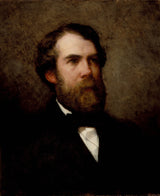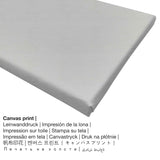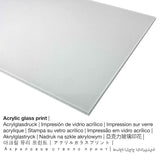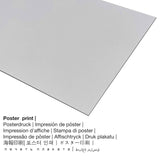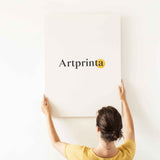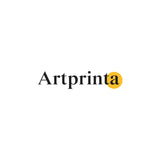William Morris Hunt, 1857 - Eserese Edward Wheelwright - mbipụta nka mara mma
Ụtụ gụnyere. Mbupu gbakọrọ na ndenye ọpụpụ.
Additional specifications by Los Angeles County Museum of Art website (© Nwebiisinka - nke Los Angeles County Museum of Art - www.lacma.org)
Trained as a lawyer and artist, Edward Wheelwright (1824-1900) is known today for his writings on art. He was born into a prestigious Boston family and educated at the finest schools, including Harvard, where he was a classmate of Hunt. Well traveled and erudite, Wheelwright turned to painting, first studying art around 1850 in the Parisian atelier of Eugène Cicéri (1813-1890), a landscape painter. Five years later, inspired by Hunt, he returned to France and persuaded Millet to become his teacher. Their student-teacher association was quite formal, the only one of its kind to be made by an American with Millet. However, Wheelwright never seriously pursued the career of an artist. After his return to the United States, he turned his attention to other aspects of art, becoming a critic for the Atlantic Monthly in the late 1870s. He actively promoted the reputation of Millet in this country, through his article "Personal Recollections of Jean-Franqois Millee", of 1876 in the Atlantic Monthly and through his assisting the Boston Museum of Fine Arts in raising funds for the purchase of paintings by Millet. In June 1856 Wheelwright returned home after spending nine months in Barbizon. He joined Hunt at Newport, becoming part of the intimate circle of artists and writers around Hunt and his family. It was at this time that Hunt painted his portrait. With his return to the United States, Hunt entered the field of portraiture, and Wheelwright’s bust is an early example of Hunt’s extensive work in that genre. Some of his best portraits were created during his Newport years. Although he received numerous commissions, he often painted his friends. Hunt’s handling of the portrait reveals his French training, in particular the influence of Thomas Couture and Millet. The overall effect is one of softness, in contrast to the harsh clarity typical of mid-nineteenth-century American portraits. Hunt built up Wheelwright’s face with light and dark passages of color, including different shades of pinks, roses, and oranges, vigorously applied in small strokes over a warm underdrawing. The head is quite plastic, but its contour is blurred. The warm tonal palette of browns is carried through into the background, although less densely.
Data ndabere gbasara ọrụ nka mbụ
| Aha nke ihe nka: | "Portrait of Edward Wheelwright" |
| Nchịkọta nke ọrụ nka: | sere |
| Otu sara mbara: | nkà nke oge a |
| Time: | 19th narị afọ |
| Year: | 1857 |
| Ogologo afọ nka nka: | gbara afọ 160 |
| Ụlọ ihe ngosi nka / mkpokọta: | Ebe ngosi nka nke Los Angeles County |
| Ebe ngosi nka: | Los Angeles, California, Njikota Obodo Amerika |
| Weebụsaịtị ihe ngosi nka: | www.lacma.org |
| Ụdị nka nka: | ngalaba ọha |
| Site n'aka: | Ụlọ ihe ngosi nka nke Los Angeles County (www.lacma.org) |
Banyere omenka
| Aha onye nka: | William Morris Hunt |
| A makwaara dịka: | Hunt William Morris, Hunt W. M., wm morris hunt, William Morris Hunt |
| Gender: | nwoke |
| Obodo onye nka: | American |
| Ọrụ onye na-ese ihe: | onye na-ese ihe, onye na-ese ihe, onye na-ese ihe, drawer, onye na-ese ihe |
| Mba onye si: | United States |
| Otu nka: | omenkà nke oge a |
| Ụdị nka: | Ihunanya |
| Akwụsị: | 55 afọ |
| Amụrụ n'afọ: | 1824 |
| Ebe amụrụ onye: | Brattleboro, Windham County, Vermont, Njikota Obodo Amerika |
| Nwụrụ n'afọ: | 1879 |
| Nwuru na (ebe): | New Hampshire, Njikota Obodo Amerika |
Ngwaahịa a
| Nkewa edemede: | ezi nka mmeputakwa |
| Mmeputakwa: | dijitalụ mmeputakwa |
| Usoro mmepụta: | Mbipụta UV ozugbo (mbipụta dijitalụ) |
| Mmalite nke ngwaahịa a: | emepụtara na Germany |
| Ụdị ngwaahịa: | mmepụta ihe na-achọ |
| Ihe eji eme atụmatụ: | ihe ndozi ụlọ, ihe ndozi mgbidi |
| Nhazi nka nka: | usoro eserese |
| Oke akụkụ: | 1:1.2- (ogologo: obosara) |
| Ntụgharị nkọwa akụkụ akụkụ: | ogologo bụ 20% mkpụmkpụ karịa obosara |
| Ngwa ngwaahịa dị: | mbipụta ọla (aluminium dibond), mbipụta akwụkwọ mmado (akwụkwọ kwaaji), mbipụta kanvas, mbipụta iko acrylic (nwere ezigbo mkpuchi iko) |
| Nhọrọ nke Canvas Mbipụta (akwa akwa na etiti ihe ndọtị): | 50x60cm - 20x24", 100x120cm - 39x47" |
| Acrylic glass print (nwere ezigbo mkpuchi iko) nhọrọ: | 50x60cm - 20x24", 100x120cm - 39x47" |
| Nhọrọ nke mbipụta akwụkwọ mmado (akwụkwọ kwaaji): | 50x60cm - 20x24", 100x120cm - 39x47" |
| Aluminium dibond ebipụta (ihe aluminium) nha dị iche iche: | 50x60cm - 20x24", 100x120cm - 39x47" |
| Nhazi nke nnomi nka: | agunyeghi |
Nweta ụdị ebipụta nka mara mma ịchọrọ
The product dropdown list provides you with the chance to pick your prefered material and size. Hence, we allow you to choose among the following options:
- Kwaaji: The canvas print is a printed canvas mounted on a wood stretcher. It creates a particular effect of three-dimensionality. Hanging a canvas print: Canvas prints are relatively low in weight, which means that it is quite simple to hang up the Canvas print without the support of extra wall-mounts. Therefore, canvas prints are suitable for all types of walls.
- Aluminom dibond mbipụta (ọla): An Aluminium Dibond print is a material with an impressive depth. The Aluminium Dibond Print is the ideal start to prints with aluminum. The colors of the print are luminous, the details of the print appear clear and crisp.
- Mbipụta iko acrylic (nke nwere ezigbo mkpuchi iko n'elu): A glossy print on acrylic glass, often referenced as a UV print on plexiglass, will turn your favorite original into beautiful décor and forms a great alternative to canvas and aluminidum dibond fine art prints. The work of art is being made with modern UV direct print machines. Our plexiglass with real glass coating protects your custom art replica against sunlight and heat for many decades.
- Mbipụta akwụkwọ mmado (akwa akwa akwa): A poster is a UV printed cotton canvas paper with a nice surface texture. Please bear in mind, that depending on the absolute size of the poster we add a white margin of approximately 2-6 cm round about the print motif in order to facilitate the framing with a custom frame.
Nkọwa nke ihe ahụ
The more than 160 year old painting was painted by William Morris Hunt. Today, this artwork belongs to the digital art collection of Ebe ngosi nka nke Los Angeles County in Los Angeles, California, Njikota Obodo Amerika. Site n'ikike nke Los Angeles County Museum of Art (www.lacma.org) (ọha na eze).Ihe kredit nke ọrụ nka bụ: . Kedu ihe ọzọ, nhazi nke mmepụta dijitalụ dị n'ime Eserese format ma nwee oke nke 1: 1.2, nke pụtara na ogologo bụ 20% mkpụmkpụ karịa obosara. William Morris Hunt was a painter, sculptor, graphic artist, drawer, lithographer, whose style can primarily be classified as Romanticism. The North American artist was born in 1824 in Brattleboro, Windham county, Vermont, United States and passed away at the age of 55 in the year 1879.
Important legal note: We try whatever we can to depict the products in as much detail as possible and to display them visually on the respective product detail pages. Still, the pigments of the print products, as well as the printing might vary somehwat from the image on the screen. Depending on your settings of your screen and the nature of the surface, not all color pigments can be printed as exactly as the digital version depicted here. Bearing in mind that all our fine art prints are processed and printed by hand, there may as well be minor discrepancies in the motif's exact position and the size.
Copyright right, Artprinta.com

